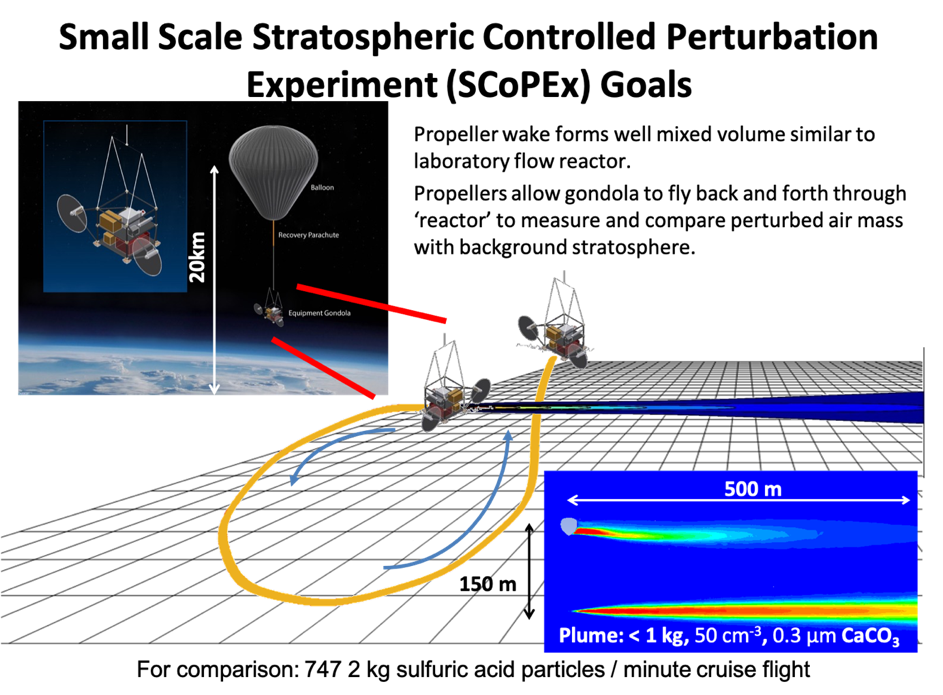32 SAI Stratospheric Aerosol Injection
Pain-killer - no solution
I often compare SAI to painkillers, opioids, which treat symptoms but don’t solve underlying problems – and their use can delay much needed action on a solution. This corresponds to my largest concern about the risks of SAI research: the moral hazard. This is the idea that humanity will relax its already feeble efforts on mitigation because of the hope of a ‘painkiller‘. Also similar to painkillers, there is the danger of addiction to SAI, in which continued use requires higher and higher doses as no action on emissions is taken. Just like sudden withdrawal of opioids can be disastrous, so could sudden cessation of SAI – creating a ‘termination shock’, as the full force of underlying climate change came to bear over the 2-3 year lifetime of stratospheric aerosol.
SAI has not been researched nearly enough to even consider anything close to deployment and research is slow. There are essentially no existing governance processes specific to small-scale outdoor experiments on SAI.
As the principal investigator of the Stratospheric Controlled Perturbation Experiment (SCoPEx) – a proposed experiment that would be the first to inject particles into the stratosphere, but which would begin outdoor testing without particle injection – I share concerns about SAI research.
What is known, and not known, about stratospheric aerosol injection (SAI)?
SAI is the idea of introducing particles into the stratosphere, which would scatter sunlight to space and cool the Earth’s surface. Our prediction is that they would stay there for 2-3 years before returning to ground.
Current computer-based models make injecting particles into the atmosphere look good – I fear too good. Some simulations have suggested that combining SAI with emissions cuts could reduce many global climate impacts, such as extreme temperatures, droughts, and tropical storm intensity.
SAI could perhaps be used to slow down the rate of climate change (a rapid rate of change could make it impossible for humanity and ecosystems to adapt), while the slower acting – but more important – emission reductions, and very likely carbon dioxide removal, are taking place.
Yet, there are also tremendous uncertainties and potential risks around SAI. For example, sulfate aerosol, a commonly modelled aerosol due to its natural stratospheric occurrence, destroys the stratospheric ozone layer and heats up the stratosphere, changing atmospheric circulation.
We do not understand stratosphere circulation well enough, and so we cannot know the implications of messing with it without research.
SCoPex
If we receive permission, our Stratospheric Controlled Perturbation Experiment (SCoPEx) would launch a large research balloon from Esrange Space Center in Kiruna, Sweden. It would rise to approximately 20 kilometers, where we would test its navigation, communication, and instrumentation under extreme stratospheric conditions.
Later, if approved by the independent Advisory Committee, follow-up experiments would release about 2 kilograms of calcium carbonate particles over an area roughly 1 kilometer long and 100 meters wide. (SCoPEx proposes to study calcium carbonate as early indoor research suggests it may cause lower ozone destruction and significantly less stratospheric heating than sulfate.)
The balloon would then turn around to measure whether the particle sizes, locally reflected sunlight, and chemical impact on ozone match our models.
These results and meteorological measurements would then be integrated into global climate models, improving their ability to predict the effectiveness and risks of stratospheric geoengineering.
